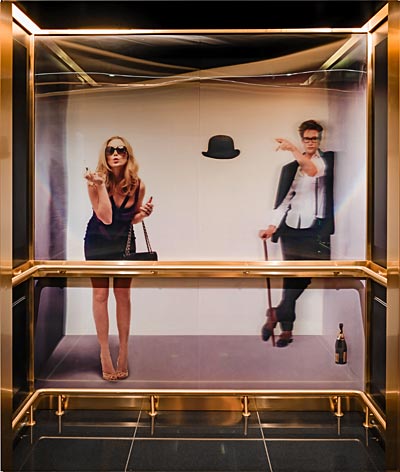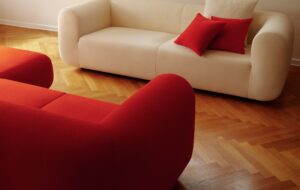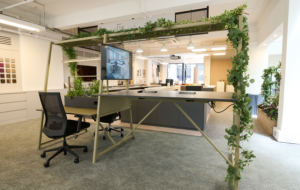|
Tom Dixon’s nautical-themed conversion of Sea Containers House on the South Bank restores the building to its original intended use as a hotel One might frown at news of another luxury hotel opening in London – just another non-place, an exclusive retreat for the bon viveur, the superficial conversion of a fire station or disused art deco garage, such as the Chiltern Firehouse in Marylebone and the hotly-anticipated Beaumont in Mayfair, respectively. But Sea Containers House, the site of the soon-to-be-opened Mondrian London, was originally conceived as a luxury hotel when it was built in the 1970s, before a change of ownership during construction led to it becoming offices. The building, on the South Bank, was designed by acclaimed American architect Warren Platner and its transformation into a hotel was led by designer Tom Dixon and his Design Research Studio. Dixon’s team took its cue from transatlantic travel and the English-American theme that kept cropping up during the design process, as well as incorporating the influence of Platner – best known for his nickel-plated steel wire armchairs for Knoll and Windows on the World, the restaurant at the top of the World Trade Center. Approaching from the south side, guests are greeted by a sweeping, copper “ship’s hull” that cuts through the glass curtain wall, providing both cover for retail units outside and a reception in the lobby. “It was made by the team responsible for restoring the Cutty Sark,” says Helen Arvanitakis, head of interior design at Design Research Studio. The lobby toilets are next on the tour – Dixon firmly believes that this is where the quality of an establishment is set. They feature curved walls, reflective brass detailing and dark rosewood panelling made out of Formica, referencing the ocean liners of the 1920s. “The studio wanted to pick up on some of the materiality you find in Platner’s interior designs,” Arvanitakis says. Devoid of the usual hi-tech paraphernalia found in modern hotels, the cabin-like (in size and style) standard bedrooms are pared-down, muted, calm spaces to counteract the visual and aural noise experienced on the ground floor.
The lifts break away from the nautical theme, featuring beguiling, full-height holographic images (above and below) of Dixon and members of his office in familiar guises: Queen Victoria, an English gent and an astronaut all appear. The effect is uncanny – and the shifting figures may prove unpopular after a visit to the ground-floor Dandelyan lounge bar, where experimental mixologist Ryan Chetiyawardana will be serving his world-class heady beverages. The Dandelyan is of the gentleman’s club mould: wood-panelled walls, chesterfield sofas and updated tub chairs, all flanked by an imposing emerald-coloured marble bar.
In the American diner-inspired restaurant, which opens out onto Queen’s walk, the team attempted to expose the original fabric of the building – concrete coffers in the ceiling break up the space and provide an interesting change in texture and height. “You don’t have what is effectively a seventies building completely denied of its original heritage,” Arvanitakis says. The hotel is styled in piecemeal by various artifacts and models, often in the shape of ships and naval instruments, on loan from the Nation Maritime Museum in Greenwich. “It’s been the perfect playground for us to pull out a few very special pieces,” says Arvanitakis. The hotel also features various artworks and installations by Dixon himself, such as an oversized link of purple chain, reminiscent of a Jeff Koons sculpture, in the lobby. It is unclear whether Dixon’s work jars or blends with the décor. If it is the latter, perhaps it is because the building as a whole verges on nautical pastiche – arrogating to itself Platner’s heritage – but this can only be admired in a luxury-hotel setting, where irreverence is all too rare. The Mondrian London at Sea Containers House opens on 30 September 2014 |
Words Arthur Thompson |
|
|


















